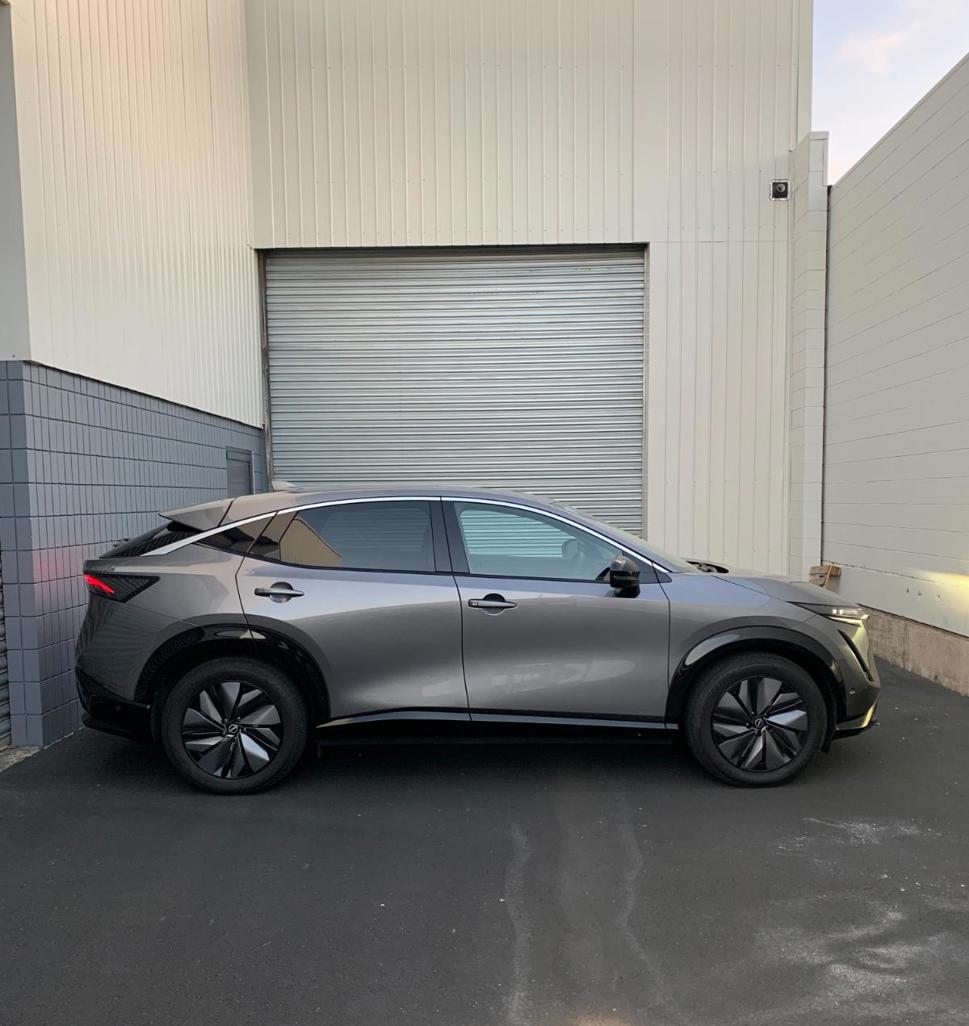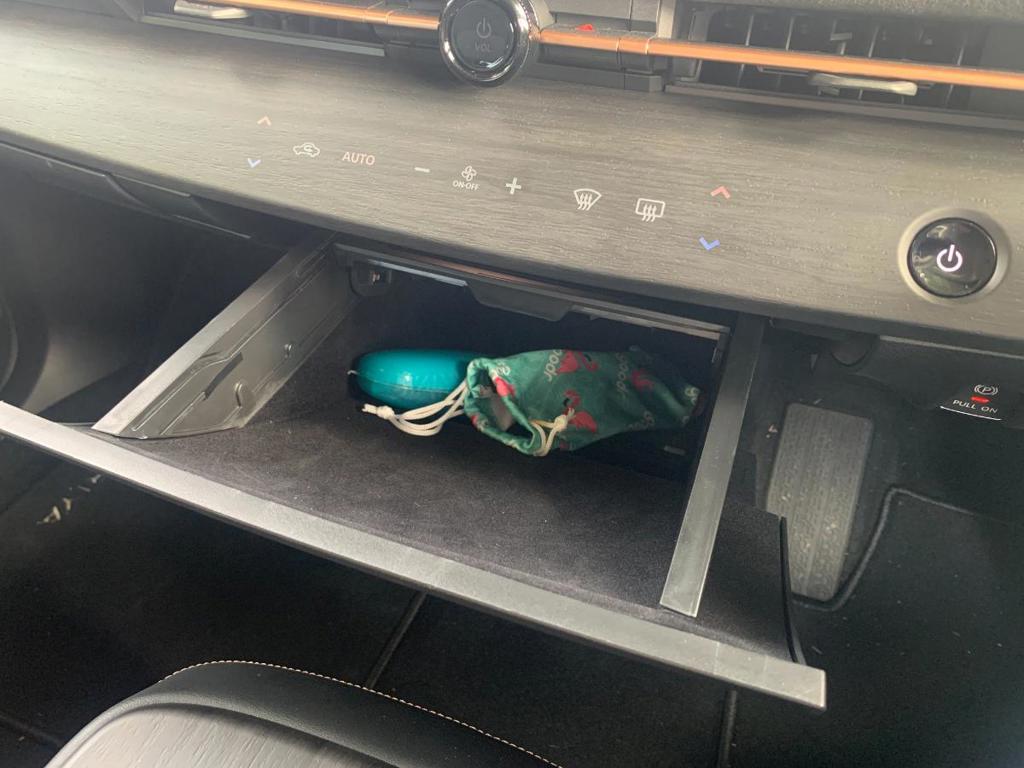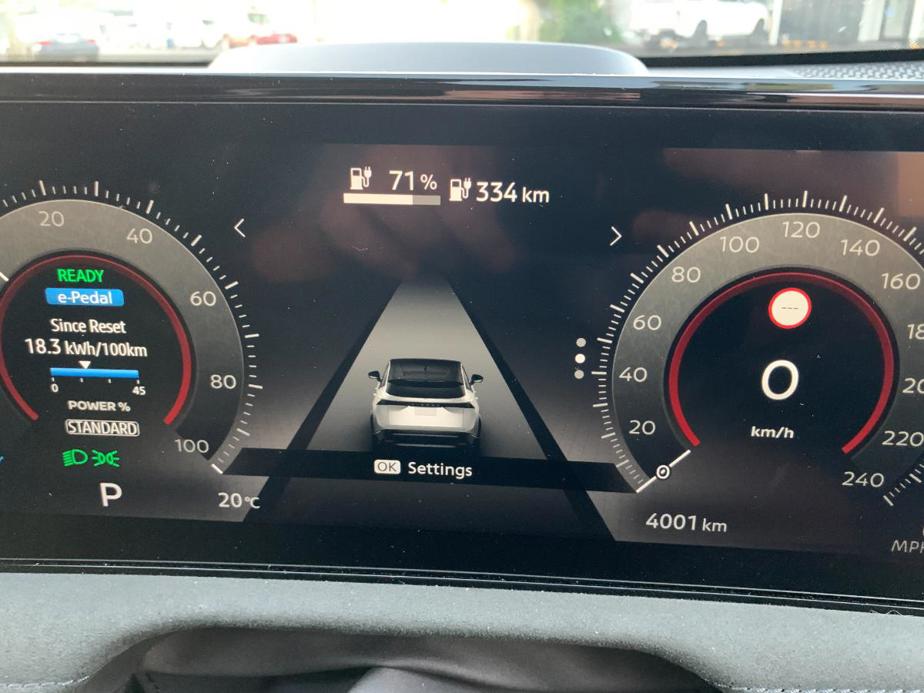EDIT Nov 15: following launch delays, today Nissan NZ announced pricing of the Ariya, starting at $59,990 for the Engage, $69,990 for the Advance and $89,990 for the Evolve. Note: All prices are introductory and will rise to $77k, $83k and $110k). Here is our first drive review from Feb 2024. More updated info to come.
--
Exhilarating is how Nissan describes its own new Ariya. Similarly, enduring is one way to describe the Nissan Leaf, the car that started and defined the mainstream EV for Nissan, way back in 2010.
And while the Ariya is the spiritual successor to the Leaf, which lives on, it’s also the brand’s newest EV to carry the flame. (Not literally, Facebook anti-fans).

First announced in July 2020 and on sale in Japan a year later, Ariya has been a long-time coming to NZ, but we have the typical offerings of electric: front-wheel or all-wheel drive, two battery sizes (63 and 87kWh) with range up to 536-553km, to be confirmed by Nissan NZ; and three spec levels (Engage, Enhance and AWD Evolve), with prices ranging from the regions of $75 to $115k.
The three key variants in the Nissan NZ range start with the Engage, a 2WD, 63kWh model with 160kW/300Nm.

Three drive modes, an e-pedal for maximum regen and a 750kg towing capacity are key features, along with 19-inch wheels, auto cruise control, auto lights and wipers, the requisite gadgets such as a 12.3in touchscreen with CarPlay and Android, wireless phone charger, rearview camera and all-around sensors, and all the usual safety aids like traffic sign recognition, auto emergency braking and rear cross-traffic and back-up collision alerts/intervention.
It’s a modern, stylish, SUV coupe style body, with way more presence than a Tesla Model Y.
The mid-spec Advance model adds heated, power front cloth and leather seats, tinted rear windows, heated steering wheel, LED fog lights and hands-free auto tailgate, plus an Around View monitor, reinforcing its value for money with the modest $5k bump from the base model price.

It’s a $20k leap to the top spec e-4orce AWD Evolve, which also offers a host of gizmos to the mix: intelligent key with driver memory for seats, mirrors and steering, LED lights, panoramic glass roof, 20in alloys, an added snow drive mode, leather trim, heated rear seats, power and heated mirrors and a power sliding centre console, a curious answer to a question no-one asked, and even more curiously, one that works. Range increases to more than 500km from its 87kWh battery.
It’s not trying too hard to be an EV,, with no overt electric badging, and able to slip into the mainstream SUV EV genre rather easily.
It’s a mixed-spec, pre-production Ariya that we drove, in gun metallic, so don’t take its visual equipment as final, as it’s a front-drive model with top-spec equipment, though it managed 0-100km/h in 7.95 seconds as tested.

The big wheels fill out each corner, and that smooth grille has detailed textures. It’s a modern, stylish, SUV coupe style body, with way more presence than a Tesla Model Y, way taller than the Leaf.
It’s almost replicating the increasing power with the revs of a petrol engine, served up in a relentless but polite shove.
Interestingly, it’s not trying too hard to be an EV, either, with no overt electric badging, and able to slip into the mainstream SUV EV genre rather easily.

Inside the cabin is modern and stylish, with shapely, supporting seats and a thick centre console, that offers a wireless smartphone charger under the flip-up armrest, and the Ariya’s party trick: the electrically sliding centre console moves the whole upper part of the armrest forward or back; which does seem to aid practicality, allowing better access to the lower storage deck for a phone, and two nearby USB-A/C ports – there's clearly the design intention to get phones placed in less-accessible areas to avoid the temptation while driving - smart.
It also opens up space between front occupant legs for a bit of leg stretch room, and for the other cute storage bin that electrically drops, hidden in the centre dash, revealing a soft-lined, rather large and surprisingly useable storage.

The semi-haptic buttons also control, among other things, the drives modes between Normal, Sport and Evo, altering the throttle response. Still not convinced that these haptic buttons work in a moving car, when it’s often required to anchor a finger to accurately finger a small button. At least the centre console buttons have defined markings, whereas the dash buttons are simply symbols, and you need to anchor your hand to accurately operate the symbol.
The driver interface carries a practical set of conventional style circular gauges that offers a lot of key info like battery and range and speed in clear displays, and three pages of consumption. Our week with Ariya, mixing a lot of less-efficient motorway, still managed around 16-18kW/100km which is quite good for its size and better than its claim of 18.1 – but where Ariya really excels is the e-pedal regeneration, which works very effectively at low or high speeds: most impressively, it reeled back 10km from the southbound run down the Bombay Hill, whereas most EVs regen around 3-5km and quitely goes about its business of putting power back into the battery without having to think about it.

The steering wheel has its normal array of buttons for audio and intelligent cruise control, part of what Nissan calls ProPilot, with three distance settings. But Nissan continues to confuse newcomers to Pro-Pilot with the button marking. Here’s a tip: when looking to activate cruise, don’t hit the cruise control button: that’s for the speed limiter: the blue circle is ProPilot which activates cruise and then normal operation resumes.
Given this pre-production unit isn’t final spec, we’ll give a pass to the slightly messy and complex infotainment system; selecting the radio took us way longer than expected - defeated, we ended up using Nissan’s voice control, and using CarPlay for the majority.

Ditto for the overly eager alert that kept reminding us to hold the steering wheel while driving in a perfectly straight line on the motorway that required no input. Until we found the off button near the right knee. Just pre-production bugs.
The power delivery is modest, 160kW/300Nm is delivered with the expected changes in acceleration and range depending on the drivetrain and weight, and is really refined and proof that EVs are becoming much smoother: gone are the days of instant torque and a sickening surge of power, the Ariya provides a firm but super smooth surge of power without the sudden wallop that will have the wife and kids complaining. It’s almost replicating the increasing power with the revs of a petrol engine, served up in a relentless but polite shove. It will get a trace of wheelspin in the front-drive version, but even in the wet, traction control keeps it all civil.

A highlight is the steering, sharp and direct, needing less input than typical. Rear seat room is good for a six-footer, though can be a little visually snug with the sloping C-pillar.
The Ariya is most impressive, and one of those cars that blurs the line between SUV and EV, without highlighting or isolating either, offering a practical, functional, quiet and comfortable medium-sized SUV. It’s a stunning tribute and evolution of technology from a pioneering model, while reminding us that Nissan’s experience in EVs is longer than most.
MOTOR: Single motor, FWD/AWD BATTERY: 63/87kWh, max charge 7-22kW AC, 130kW DC POWER: 160kW/300Nm 0-100KM/H: 7.5/5.1secs (7.9 tested) BATTERY: 63/87kWh RANGE: 404-553km (WLTP) PRICE: $75-115k (approx).























